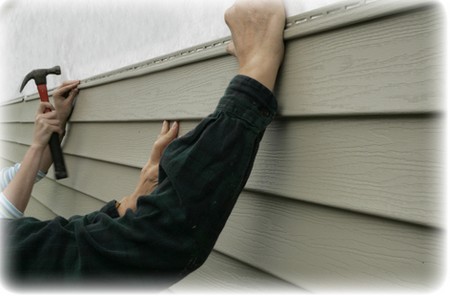It’s all now easy to do siding installation such as vinyl siding. Take a note at the following to know and try yourself to do it yourself, however if you have little experience with siding then contact a professional to get your siding panel installation done correctly. Existing home owners will like vinyl siding for all those reasons, plus it gives all their homes modern updated appearance, eliminates need for house paintings, and relatively handy home owner can install vinyl sidings themselves or with help of couple of friends. Head over to the original site to know more about how to install vinyl sidings.
Installation:
- Ensure existing surface is smoother and in a good repair. This will be the time to replace the old caulking and then replace or repair any damaged one or the rotting wood.
- Consider installing extra insulation under vinyl sidings. Foil backed for insulation provides a moisture barrier to increase insulation value of home providing smooth surface for vinyl siding.
- Installing furring strip will help hold insulation in the places as well as providing solid nailing surfaces.
- Installing a vinyl siding requires the trim piece for wall to be installed before walls are all covered. The trim piece needs to be installed wherever vinyl sidings come in contact with something else (windows, doors, or wall dryer vents).
- The siding installation will begin with a starter strip. This piece of vinyl siding runs all around house and holds a base of first course of sidings tightly to walls.
- Measure the top plate else so it fits at each corner and snap the chalk line between marks. Install a starter strip along chalk lines, nailing in the center of nailing slots at 10-inch intervals. Leave a 1/4-inch gap between ends of a starter strip section, allowing expansion.
- Install a J-channel around the windows and the doors to receive vinyl siding course. Install the bottom piece first, then side, and then finally top. Miter corners at 45 degrees angle at top piece overlapping sides so moisture will be directed to the window.
- Install inside corner posts and the outside corner post as necessary, following walls.
Installing Siding Panels:
- The first panel at the bottom needs to be installed to be locked securely into the starter strips. Push panel up until interlock is engaged with a starter strip, and then fasten it in place. Put a nail for every 16 inches in center of nail slots. You can also hire a crew with the Lifetime Exteriors logo as they are top experts in this matter.
- Install first courses on wall, and then work your way up the wall by installing panels by interlocking them to course below.
- Overlap the horizontal panel by at least an inch. Measure and then cut horizontal panels so that they will be at least a 1/4 inch away from the windows and at corners. The ends must be tucked under trim pieces and gaps should not be noticeable.
- Offset ends of siding pieces such that no 2 courses are aligned vertically. While overlapping sidings, ensure that the factory-finished edge is exposed.
- Check for every 5 or 6 courses to be sure that you are installing the siding level.
If this seems complicated or you don’t have the time to do it yourself, you can see here a professional siding company that can do it for you.
